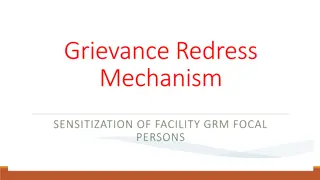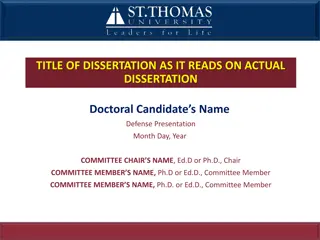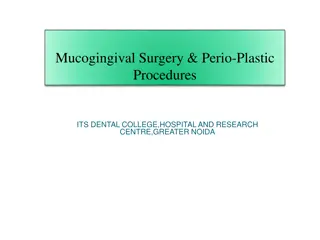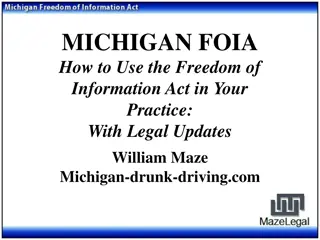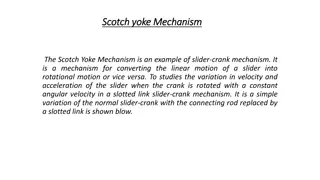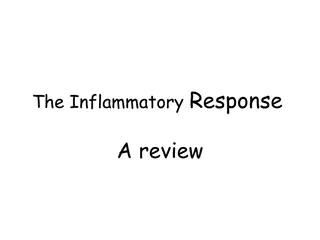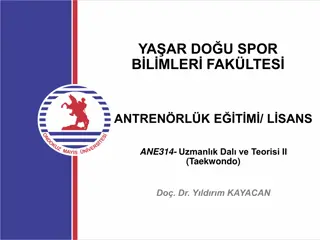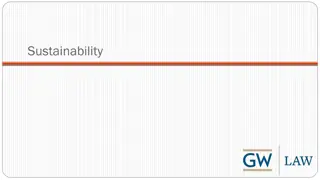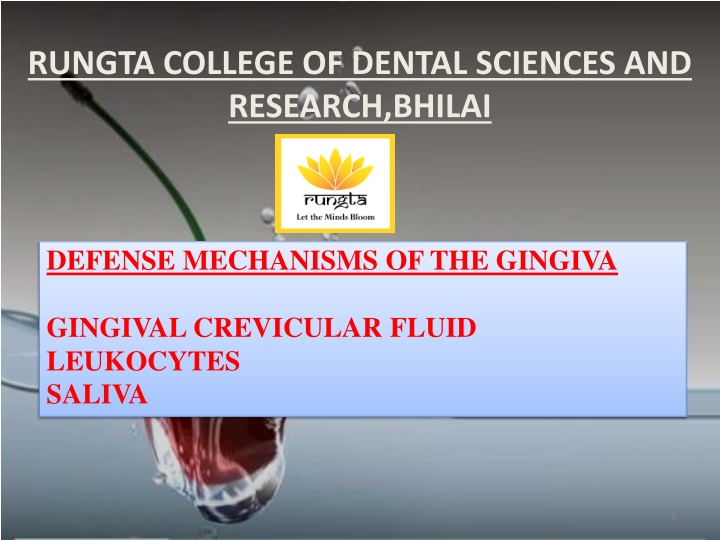
Defense Mechanisms of the Gingiva: GCF & Saliva Analysis
Explore the intricacies of gingival defense mechanisms through an in-depth analysis of Gingival Crevicular Fluid (GCF) and saliva. Learn about the production, collection, estimation methods, composition, and clinical significance of GCF. Discover the role of saliva in maintaining oral health as well. Dive into specific learning objectives and core areas related to these vital aspects of oral health.
Download Presentation

Please find below an Image/Link to download the presentation.
The content on the website is provided AS IS for your information and personal use only. It may not be sold, licensed, or shared on other websites without obtaining consent from the author. If you encounter any issues during the download, it is possible that the publisher has removed the file from their server.
You are allowed to download the files provided on this website for personal or commercial use, subject to the condition that they are used lawfully. All files are the property of their respective owners.
The content on the website is provided AS IS for your information and personal use only. It may not be sold, licensed, or shared on other websites without obtaining consent from the author.
E N D
Presentation Transcript
RUNGTA COLLEGE OF DENTAL SCIENCES AND RESEARCH,BHILAI DEFENSE MECHANISMS OF THE GINGIVA GINGIVAL CREVICULAR FLUID LEUKOCYTES SALIVA 1
SPECIFIC LEARNING OBJECTIVES CORE AREAS DOMAIN CATEGORY Affective Desire to know INTRODUCTION Cognitive Must to know DEFINITION Cognitive Must to know HISTORY Cognitive Must to know MECHANISM OF GCF PRODUCTION Cognitive Must to know MECHANISM OF GCF COLLETION Cognitive Must to know METHODS OF ESTIMATING GCF Cognitive Must to know COMPOSITION OF GCF Cognitive Must to know CLINICAL SIGNIFICANCE OF GCF Cognitive Must to know SALIVA 2
CONTENT PART I INTRODUCTION DEFINITION HISTORY MECHANISM OF GCF PRODUCTION MECHANISM OF GCF COLLETION PART II METHODS OF ESTIMATING GCF COMPOSITION OF GCF CLINICAL SIGNIFICANCE OF GCF SALIVA 3
Methods of estimating the GCF volume collected 4
Further accuracy was achieved by staining the strips with ninhydrin to produce a purple color in the area where GCF had accumulated The amount of GCF collected on a strip was assessed by the distance the fluid had migrated up the strip. A more accurate value was achieved by assessing the area of filter paper wetted by the GCF sample. Cimasoni et al 1983 5
PERIOTRON An electronic measuring device that allows accurate determination of the GCF volume and subsequent laboratory investigation of the sample composition. Three models of Periotron have been produced: the 600, 6000 and now the 8000 6
The instrument measures the affect on the electrical current flow of the wetted paper strips. The wetness of the paper strip affects the flow of an electronic current and gives a digital readout. 7
Limitations of the Periotron: Inability to measure volumes of GCF greater than 1.0ml, although when using filter strips such as Whatman 3MM strips, the strips themselves are capable of absorbing much larger volumes. 8
Amount of GCF collected The amount of GCF collected is extremely small. Measurements performed by Cimasoni showed that a strip of paper 1.5 mm wide and inserted 1mm within the gingival sulcus of a slightly inflammed gingiva absorbs about 0.1 mg of GCF in 3 min. 9
Challacombe used an isotope dilution method to measure amount of GCF , which showed that mean GCF volume in proximal spaces from molar teeth ranged from 0.43 to 1.56 l 10
Problems with GCF Collection and Data Interpretation Contamination Blood, saliva, plaque Periotron....5 seconds change with the protein concentration Sampling time Volume determination Recovery from strips Evaporation centrifugal elution technique absolute amounts (mg ), concentrations ( mg/ml ) or either of these two with respect to pocket depth or duration of sample collection. Data reporting 11
GCF flow rates in health and disease GCF flow rates 3 8 l/h Shallow sulci in healthy subjects Pockets with intermediate periodontal disease GCF flow at sites with advanced periodontal disease 20 l/h. 137 l/h 12
Cellular elements Organic compounds Electrolytes Metabolic and bacterial products Enzymes and enzyme inhibitors 14
The major cellular components of the gingival crevicular fluid: Bacteria..... Adjacent plaque mass Epithelial cells.....Oral sulcular and junctional epithelium Leukocytes.....Gingival plexus of blood vessels Erythrocytes.....Blood vessels 15
Electrolytes Potassium, Sodium and Calcium have been studied in GCF. 17
Organic compounds Carbohydrates, proteins and lipids have been investigated. Glucose hexosamine and hexuronic acid are two of the compounds found in gingival fluid. Glucose concentration in gingival fluid is 3-4 times greater than that in serum. 18
Metabolic and bacterial products Lactic acid Urea Hydroxyproline Cytotoxins Hydrogen sulphide Antibacterial factors 19
Enzymes and enzyme inhibitors Acid and Alkaline Phosphatase Beta-glucoronidase Lysozyme Hyaluronidase Proteolytic enzymes 20
Circadian Periodicity There is a gradual increase in GCF amount from 6 AM to 10 PM and a decrease afterward. Sex Hormones Female sex hormones increase GCF flow, probably because permeability. Pregnancy, ovulation, contraceptives all production. they enhance vascular and hormonal increase gingival fluid 22
Mechanical Stimulation Chewing and vigorous gingival brushing stimulate the flow of GCF. Even the minor stimuli represented by intrasulcular placement of paper strips increases the production of fluid. Smoking Smoking produces an immediate transient but marked increase in GCF flow. Periodontal Therapy There is an increase in GCF production during the healing period after periodontal surgery. 23
Drugs in Gingival Crevicular Fluid Drugs that are excreted through the GCF may be used advantageously in periodontal therapy. Bader and Goldhaber 1966 demonstrated in dogs that tetracyclines are excreted through the GCF; Metronidazole 24
PERIOCHECK Detects collagenase PROGNOSTIK Detects elastase PERIOGARD To detect AST 26
SALIVA 27
Salivary secretions are protective in nature because they maintain the oral tissues in a physiologic state. Saliva exerts a major influence on plaque by mechanically cleansing the exposed oral surfaces, by buffering acids produced by bacteria, and by controlling bacterial activity. 28
Antibacterial Factors Inorganic factors Organic factors lysozyme, lactoferrin, ions and gases, myeloperoxidase, bicarbonate, sodium, lactoperoxidase, and potassium, phosphates, agglutinins such as calcium, fluorides, glycoproteins, mucins, 2- ammonium, and carbon macroglobulins, dioxide. fibronectins, and antibodies. 29
Lysozyme is a hydrolytic enzyme that cleaves the cell wall of certain bacteria and works on both gram- negative and gram-positive organisms. Lactoperoxidase-thiocyanate system in saliva has been shown to be bactericidal to some strains of Lactobacillus and Streptococcus. 30
Lactoferrin, which is effective against Actinobacillus species. Myeloperoxidase, an enzyme is released by leukocytes and is bactericidal for Actinobacillus and also inhibits the attachment of Actinomyces strains to hydroxyapatite 31
Salivary Antibodies IgA preponderant immunoglobulin found in saliva produced by the salivary glands. can inhibit the attachment of oral Streptococcus species to epithelial cells. IgG and IgM 32
Salivary Enzymes parotid amylase .. Major enzyme derived from the salivary glands, bacteria, leukocytes, oral tissues, and ingested substances. Salivary enzymes that increases in concentrations in periodontal disease: Hyaluronidase and lipase, -glucuronidase and chondroitin sulfatase, amino acid decarboxylases, catalase, peroxidase, and collagenase, and various antiproteases enzymes. 33
Salivary glycoproteins inhibit the sorption of some bacteria to the tooth surface and to epithelial cells of the oral mucosa. Mucin helps in the deletion of bacterial cells from the oral cavity by aggregation with mucin-rich films. 34
Salivary Buffers and Coagulation Factors Maintenance of physiologic hydrogen ion concentration (pH) at the mucosal epithelial cell surface and the tooth surface is an important function of salivary buffers. Important salivary buffer is the bicarbonate-carbonic acid system. 35
Saliva also contains coagulation factors (factors VIII, IX, and X; plasma thromboplastin antecedent [PTA]; Hageman factor) that hasten blood coagulation and protect wounds from bacterial invasion. 36
LEUCOCYTES 37
The leukocytes found are predominantly PMNs. They appear in small numbers extravascularly in the connective tissue adjacent to the bottom of the sulcus; from there, they travel across the epithelium to the gingival sulcus, where they are expelled 38
Living PMNs in saliva are sometimes referred to as orogranulocytes, and their rate of migration into the oral cavity is termed the orogranulocytic migratory rate. The majority of these cells are viable and have phagocytic and killing capacity. Therefore, leukocytes constitute a major protective mechanism against the extension of plaque into the gingival sulcus by killing periodontal pathogens 39
SUMMARY The presence of GCF or sulcular fluid has been known since 19th century and its compostion and possible role in oral defense mechanisms were elucidated by the pioneering work of Waerhaug and Brill and Krasse. In strictly normal gingiva little or no fluid can be collected. GCF can be collected intrasulcular method and extrasulcular Method. Saliva secretions are protective in nature because they maintain the oral tissues in physiologic state. It has antibacterial, lubricating, cleansing, and buffering action. It also helps in physical protection and tooth integrity. 40
REFERENCE Newman MG, Takei HH, Klokkevold PR, Carranza FA. Carranza s clinical periodontology, 10th ed. Saunders Elsevier; 2007. Lindhe J, Lang NP and Karring T. Clinical Periodontology and Implant Dentistry. 6th ed. Oxford (UK): Blackwell Publishing Ltd.; 2015. Newman MG, Takei HH, Klokkevold PR, Carranza FA. Carranza s clinical periodontology, 13th ed. Saunders Elsevier; 2018. 41
THANK YOU 42


